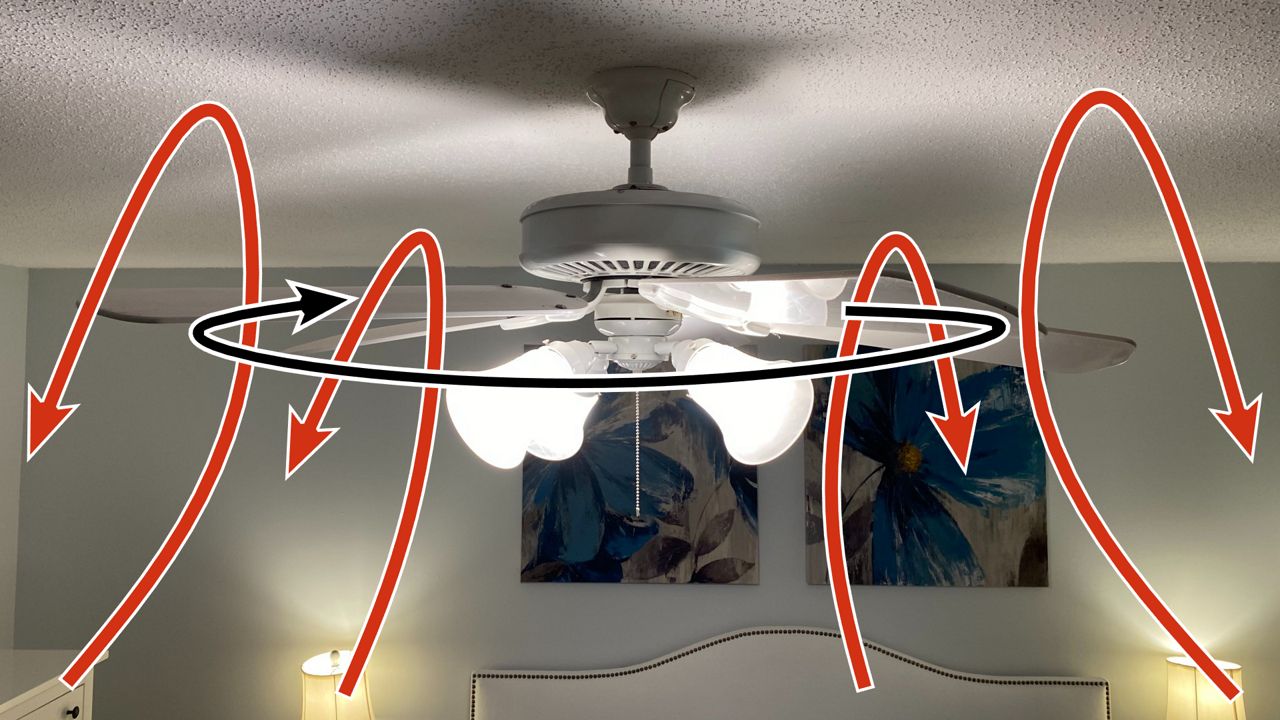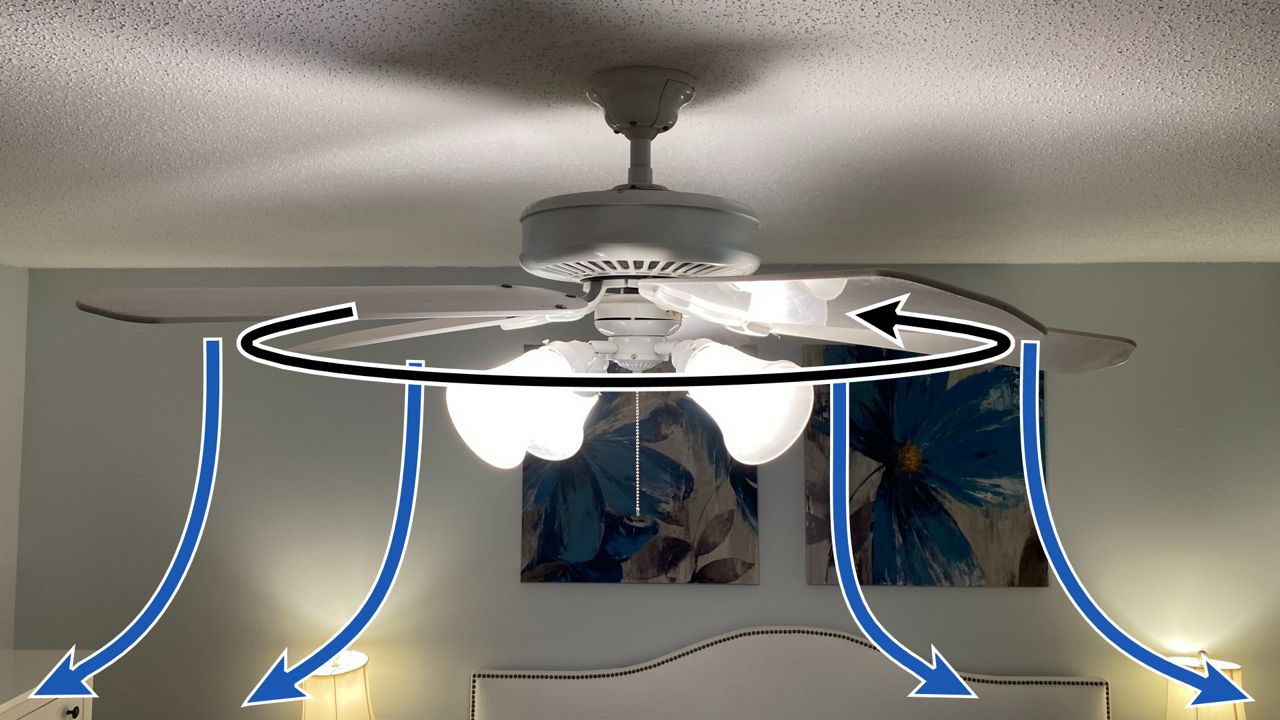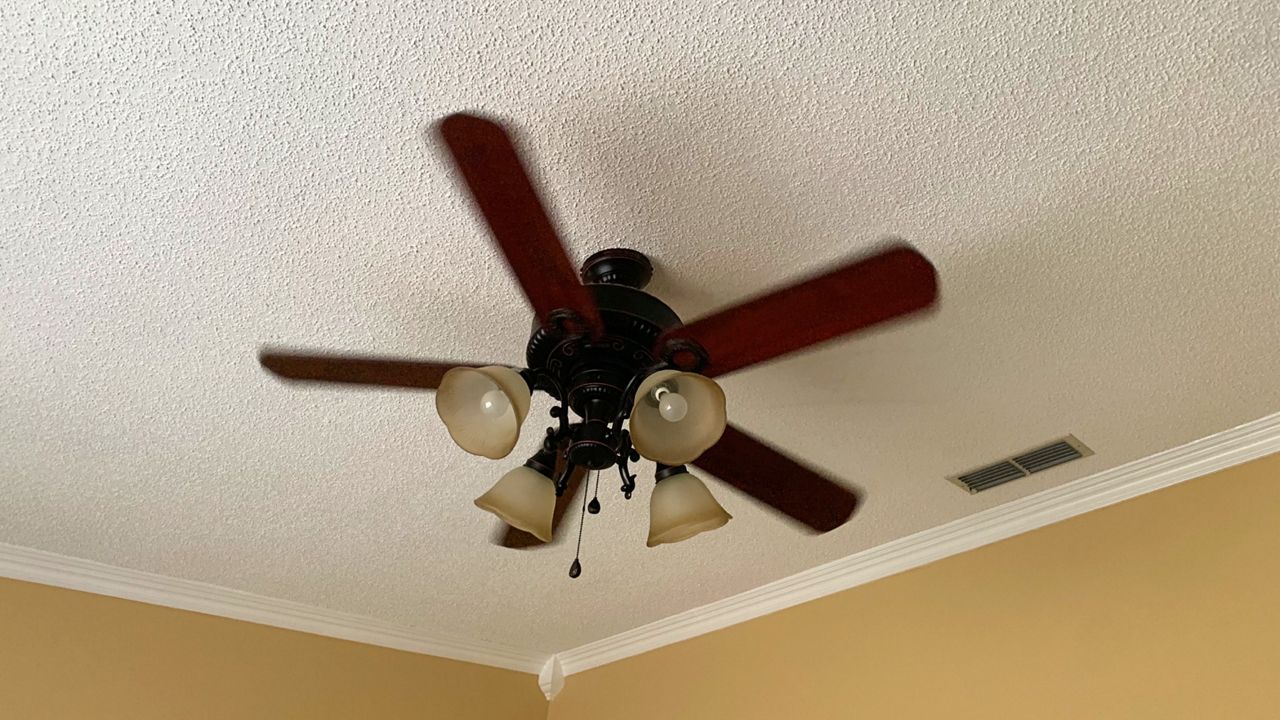If you have a ceiling fan, turn it on and look up at it. Which direction are the blades spinning? If they’re going clockwise, it’s time to change direction.
You may have noticed that your ceiling fan blades are angled slightly. There’s a reason for that! They’re designed to move the room’s air a certain way, depending on which direction the fan is spinning.
In the winter, a clockwise-spinning ceiling fan on low-speed will draw up the air and circulate it so that it mixes. Warm air rises, so it’ll make use of the warmer air that’s hanging above your head.

In the summer, a counterclockwise-spinning ceiling fan will push air down and out, creating a small cooling breeze.

To change your fan’s spin direction, check the manual to make sure you do it correctly. Most likely, the switch is on the body of the fan fixture or inside the light globe. If your fan has a remote or wall panel, check for a fan direction button there.
This little trick of running your ceiling fan the right way can lower your energy bill. The Department of Energy says you can raise the thermostat as much as four degrees in the summer when your fan is turning the right way.
One other note: make sure your ceiling fan is right for the room.
Ceiling fan blades work best when they’re 10 to 12 inches below the ceiling, 7 to 9 feet above the floor and at least 18 inches away from walls.
Fans with a diameter of 44 inches or less are good for circulating rooms up to 225 square feet. Larger rooms should use 52-inch fans or bigger.



